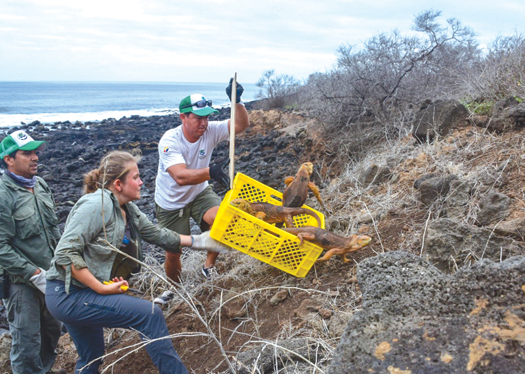
Land iguanas being released in January on Santiago Island, in the Galápagos archipelago. (Photo courtesy of Galápagos National Park)
After the naturalist Charles Darwin had observed land iguanas on the Galápagos island now called Santiago in 1835, he described the creatures’ appearance as “ugly” and “singularly stupid,” and their movements as “lazy” and “half torpid.” Had he known what was in store, he might also have added “doomed.” That’s because in the ensuing years, the island’s once-abundant population of land iguanas (Conolophus subcristatus) crashed as the local environment succumbed to invasive species—most notably feral pigs, goats and donkeys—brought there by mariners and Galápagos settlers. Indeed, Darwin’s was the last recorded sighting of Conolophus subcristatus on Santiago, then called James Island, until January of this year. That’s when scientists moved 1,436 iguanas from the nearby island of North Seymour to two coastal locations on Santiago—Bucanero and Puerto Nuevo—as part of restoration efforts that also call for reintroduction of the giant tortoise (Chelonoidis darwini). With Conolophus... [Log in to read more]